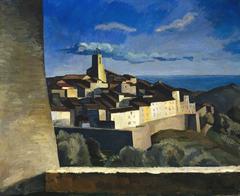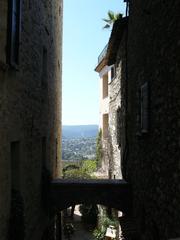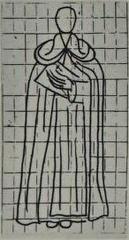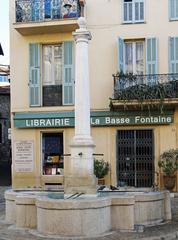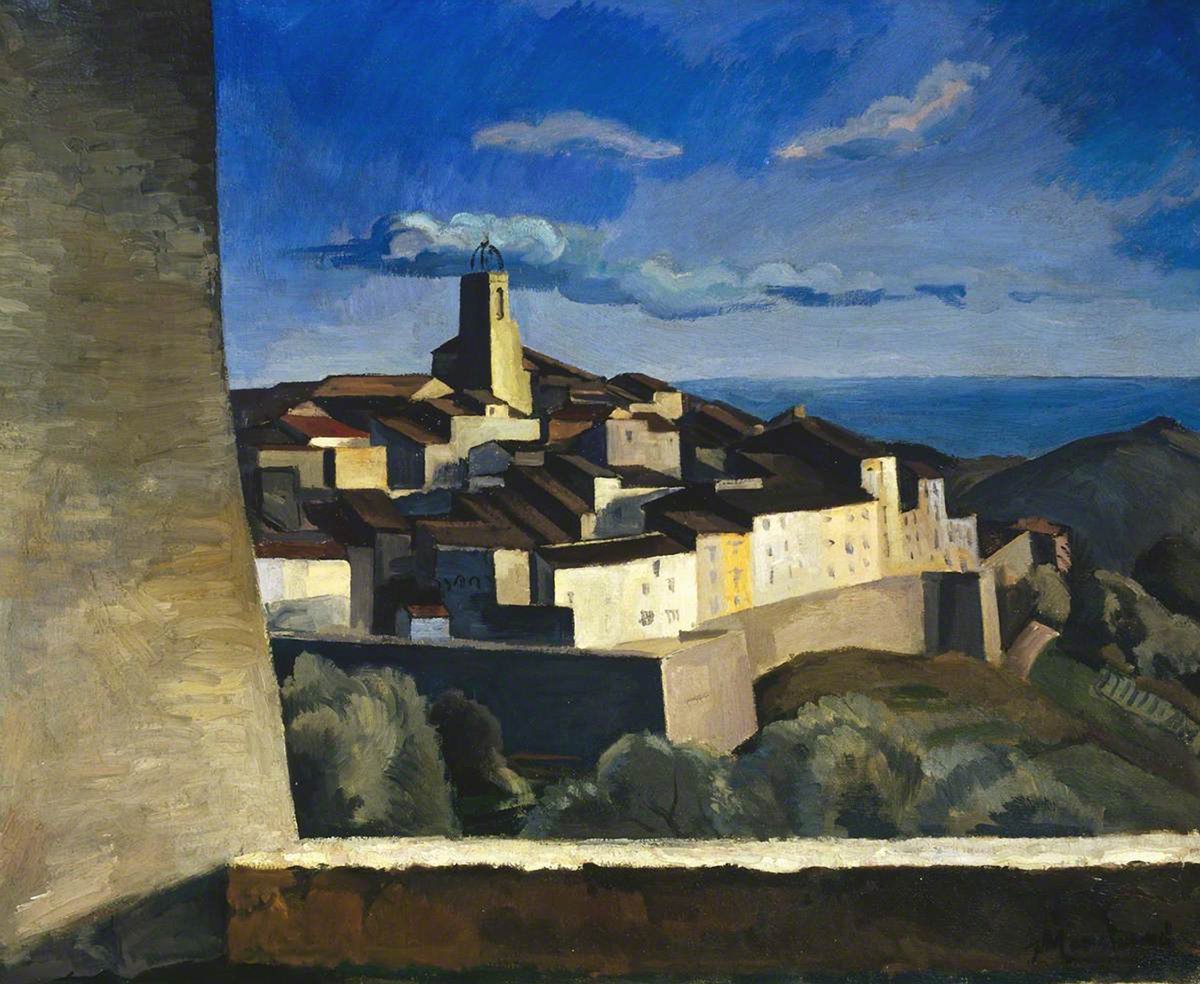
Complete Guide to Visiting Rue du Saint-Esprit in Vence, France
Date: 31/07/2024
Introduction
Nestled in the heart of the picturesque town of Vence, France, Rue du Saint-Esprit is a destination that offers a rich tapestry of history, culture, and art. This narrow, cobblestone street not only serves as a reminder of the town’s medieval origins but also stands as a testament to the various historical epochs that have shaped its present-day allure. From its strategic importance during the Middle Ages to its transformation into a vibrant hub for artists in the 20th century, Rue du Saint-Esprit has been a silent witness to the ebb and flow of time. The street’s name, ‘Saint-Esprit,’ which translates to ‘Holy Spirit,’ hints at its long-standing religious and cultural significance (Saint-Paul de Vence History).
What makes Rue du Saint-Esprit unique is its blend of architectural styles, ranging from Romanesque and Gothic to Renaissance, creating a visual narrative of Vence’s diverse historical periods. The Chapelle du Saint-Esprit, a 17th-century chapel renowned for its frescoes and stained glass windows, is one of the street’s most notable landmarks. The 20th century brought an artistic renaissance to Vence, attracting renowned painters like Henri Matisse and Marc Chagall, whose influence can still be felt today (Fearless Female Travels).
For modern-day visitors, Rue du Saint-Esprit offers more than just a walk through history. The street is lined with art galleries, boutique shops, and quaint cafes, making it a vibrant cultural hub. Whether you’re an art enthusiast, a history buff, or simply looking to enjoy the charm of a Provencal town, Rue du Saint-Esprit provides a multifaceted experience. This guide aims to offer a comprehensive overview of what Rue du Saint-Esprit has to offer, from its historical significance and architectural heritage to visitor tips, accessibility information, and much more.
Table of Contents
- [Historical Background of Rue du Saint-Esprit, Vence, France](#historical-background-of-rue-du-saint-esprit-vence-francehistorical-background-of-rue-du-saint-esprit-vence-france)
- [Medieval Origins and Strategic Importance](#medieval-origins-and-strategic-importancemedieval-origins-and-strategic-importance)
- [Architectural Developments and Fortifications](#architectural-developments-and-fortificationsarchitectural-developments-and-fortifications)
- [Religious and Cultural Flourishing in the 17th Century](#religious-and-cultural-flourishing-in-the-17th-centuryreligious-and-cultural-flourishing-in-the-17th-century)
- [Artistic Renaissance in the 20th Century](#artistic-renaissance-in-the-20th-centuryartistic-renaissance-in-the-20th-century)
- [Influence of Prominent Artists and Writers](#influence-of-prominent-artists-and-writersinfluence-of-prominent-artists-and-writers)
- [Visitor Information](#visitor-informationvisitor-information)
- [Modern-Day Significance](#modern-day-significancemodern-day-significance)
- [Visiting Hours, Tickets, and Accessibility](#visiting-hours-tickets-and-accessibilityvisiting-hours-tickets-and-accessibility)
- [Travel Tips](#travel-tipstravel-tips)
- [Special Events and Photographic Spots](#special-events-and-photographic-spotsspecial-events-and-photographic-spots)
- [Essential Visitor Tips for Exploring Rue du Saint-Esprit in Vence, France](#essential-visitor-tips-for-exploring-rue-du-saint-esprit-in-vence-franceessential-visitor-tips-for-exploring-rue-du-saint-esprit-in-vence-france)
- [Navigating Rue du Saint-Esprit](#navigating-rue-du-saint-espritnavigating-rue-du-saint-esprit)
- [Best Times to Visit](#best-times-to-visitbest-times-to-visit)
- [Local Attractions](#local-attractionslocal-attractions)
- [Dining and Shopping](#dining-and-shoppingdining-and-shopping)
- [Cultural Etiquette](#cultural-etiquettecultural-etiquette)
- [Safety Tips](#safety-tipssafety-tips)
- [Special Events](#special-eventsspecial-events)
- [Practical Information](#practical-informationpractical-information)
- [Frequently Asked Questions (FAQ)](#frequently-asked-questions-faqfrequently-asked-questions-faq)
- [Conclusion](#conclusionconclusion)
Historical Background of Rue du Saint-Esprit, Vence, France
Medieval Origins and Strategic Importance
Rue du Saint-Esprit, located in the heart of Vence, France, is steeped in history dating back to the medieval period. During the Middle Ages, Vence was a significant stronghold in the region of Provence. The Counts of Provence administered the area and granted several privileges to the town, which became a county town of a large district in the 14th century. The strategic importance of Vence was heightened in 1388 when the County of Nice switched its allegiance from Provence to the County of Savoy, redefining the eastern border of Provence. This political shift marked the River Var as the new boundary, positioning Vence as a crucial border stronghold (Saint-Paul de Vence History).
Architectural Developments and Fortifications
In response to its strategic importance, Vence saw the construction of significant fortifications. Ramparts were erected during the latter half of the 14th century to protect the town from potential invasions. Notable among these fortifications are the Porte de Vence and the Tour de l’Esperon, which still stand today with their machicolations intact. These structures were part of a broader effort to fortify the town against external threats, particularly during the reign of François I in the 16th century. François I reinforced the town’s defenses in response to repeated attacks by Charles V, King of Spain. The bastioned ramparts designed by Jean de Saint-Rémy, a fortifications expert, were cutting-edge for their time and included four sturdy bastions with French spurs (or orillons) to protect the town’s gates (Saint-Paul de Vence History).
Religious and Cultural Flourishing in the 17th Century
The 17th century marked a period of religious and cultural renewal for Vence, significantly influenced by the efforts of Antoine Godeau, the Bishop of Vence. In 1666, the church in Vence was elevated to the rank of a collegiate church and adorned with remarkable altarpieces and furnishings. The Saint Clement Chapel, decorated with frescoes, and the altar to Saint Catherine of Alexandria, featuring a painting attributed to Spanish painter Claudio Coello, are notable examples of this period’s artistic contributions. Influential families such as the Bernardis and the Alziarys constructed opulent mansions in the town, embellished with Rococo frescoes, stucco work, and monumental fireplaces and stairways (Saint-Paul de Vence History).
Artistic Renaissance in the 20th Century
The dawn of the 20th century brought an artistic renaissance to Vence, attracting painters and artists drawn by the town’s unique light and picturesque landscapes. The inauguration of a tramway line between Cagnes-sur-Mer and Vence in 1911 facilitated the arrival of artists such as Paul Signac, Raoul Dufy, and Chaïm Soutine. These artists were captivated by the vibrant colors and light of the South of France, setting up their easels in the tranquil village. The presence of Paul Roux, a local painter, art collector, and owner of the Robinson (later renamed the Colombe d’Or), further fostered this artistic community. The walls of the Colombe d’Or are still adorned with paintings from this period, reflecting the town’s rich artistic heritage (Saint-Paul de Vence History).
Influence of Prominent Artists and Writers
Throughout the 20th century, Vence continued to attract a diverse array of artists, actors, and writers, transforming the town into a vibrant cultural hub. The 1950s and ’60s were particularly notable as the village became a popular film set, drawing French and international movie stars to the French Riviera. Renowned figures such as Jacques Prévert, who lived in Vence for about fifteen years, and James Baldwin and Marc Chagall, who resided in the village for nearly two decades, left an indelible mark on the town. Chagall’s tomb in the Saint-Paul de Vence Cemetery remains a testament to his long-standing connection to the area (Fearless Female Travels).
Visitor Information
Modern-Day Significance
Today, Rue du Saint-Esprit and the broader town of Vence continue to celebrate their rich historical and cultural heritage. The narrow cobblestone streets, lined with colorful art studios and boutique shops, offer visitors a glimpse into the town’s vibrant past and present. The most lively of these streets is Rue Grande, which leads from Porte de Nice towards Porte de Vence. Here, the old stone walls are covered in clematis, and artists can be seen painting the town in their unique styles. The Fontaine de Saint-Paul-de-Vence, an old marketplace and fountain, remains a central gathering spot for locals and tourists alike (Katiesaway).
Visiting Hours, Tickets, and Accessibility
For those planning to visit Rue du Saint-Esprit and the surrounding areas, several practical tips can ensure a memorable experience. The Tourist Information Office, located at 2 Rue Grande, is open from Monday to Saturday, from 10 am to 6 pm, and on Sundays and bank holidays from April to October. Guided tours are available, offering insights into the village’s treasures and historical landmarks. Accessibility is generally good, but some of the cobblestone streets can be challenging for those with mobility issues.
Travel Tips
Visitors are encouraged to explore the narrow alleyways of the old town, where they can experience the medieval charm and see where locals live. For a unique treat, try the violet-flavored ice cream from L’épicerie des artistes, known for its creamy texture and distinctive taste. Don’t miss the opportunity to visit nearby attractions such as the Chapelle du Rosaire de Vence, designed by Henri Matisse, and the Fondation Maeght, a museum of modern art.
Special Events and Photographic Spots
Vence hosts several special events throughout the year, including the Fête de la Musique in June and the Jazz Festival in July, drawing music lovers from around the globe. For photography enthusiasts, the panoramic views from the ramparts, the picturesque Rue Grande, and the historic monuments provide perfect photo opportunities.
Essential Visitor Tips for Exploring Rue du Saint-Esprit in Vence, France
Navigating Rue du Saint-Esprit
Rue du Saint-Esprit is a charming, narrow street in the heart of Vence, France. Its medieval architecture and cobblestone pathways offer a unique experience, but navigating these quaint streets can be tricky. Here are some tips to make your visit smoother:
- Maps and Directions: While modern GPS systems are helpful, they can sometimes be unreliable in the narrow streets of Vence. It’s advisable to pick up a physical map from the local tourism office, located near the main square. This will help you navigate the intricate alleyways without getting lost.
- Footwear: The cobblestone streets can be uneven, so comfortable walking shoes are a must. Avoid high heels or any footwear that might make walking on uneven surfaces difficult.
- Accessibility: Rue du Saint-Esprit, like many medieval streets, may not be fully accessible for those with mobility issues. The narrow pathways and occasional steps can pose challenges. If you require assistance, it’s best to plan ahead and possibly arrange for a guided tour that can accommodate your needs.
Best Times to Visit
- Seasonal Considerations: The best time to visit Rue du Saint-Esprit is during the spring (April to June) and fall (September to November) when the weather is mild and the tourist crowds are smaller. Summer can be quite hot and crowded, making it less enjoyable to explore the narrow streets.
- Time of Day: Early mornings and late afternoons are ideal for visiting. The streets are less crowded, and the lighting is perfect for photography. Plus, many shops and cafes open around 10 AM, so arriving early gives you a head start.
Local Attractions
- Historical Sites: Rue du Saint-Esprit is surrounded by historical landmarks. Don’t miss the nearby Chapelle du Rosaire, designed by Henri Matisse, which is a short walk away. The chapel is a masterpiece of modern religious art (source).
- Art Galleries: Vence is known for its vibrant art scene. As you stroll down Rue du Saint-Esprit, you’ll find numerous art galleries showcasing works by local and international artists. These galleries often feature rotating exhibitions, so there’s always something new to see.
- Local Markets: If you visit on a Tuesday, you can explore the local market in the main square. It’s a great place to buy fresh produce, local cheeses, and handmade crafts (source).
Dining and Shopping
- Cafes and Restaurants: Rue du Saint-Esprit is lined with charming cafes and restaurants. For an authentic experience, try a local bistro that serves Provençal cuisine. Dishes like ratatouille, bouillabaisse, and tapenade are must-tries.
- Shopping: The street is also home to several boutique shops selling everything from handmade jewelry to local wines. These shops are perfect for picking up unique souvenirs. Remember to check the opening hours, as many shops close for a long lunch break, typically from 12 PM to 2 PM.
Cultural Etiquette
- Language: While many locals speak English, it’s always appreciated if you can greet them in French. Simple phrases like “Bonjour” (Good morning) and “Merci” (Thank you) go a long way in making a good impression.
- Photography: Rue du Saint-Esprit is incredibly photogenic, but be mindful of the residents. Always ask for permission before photographing people, and avoid taking pictures inside shops and galleries unless explicitly allowed.
- Tipping: Tipping in France is not obligatory, but it is customary to leave a small tip if you receive good service. In restaurants, leaving a few euros or rounding up the bill is appreciated.
Safety Tips
- Personal Belongings: Like any tourist destination, it’s important to keep an eye on your belongings. Pickpocketing can occur, especially in crowded areas. Use a crossbody bag and keep it in front of you.
- Emergency Contacts: Familiarize yourself with local emergency numbers. In France, the emergency number for police is 17, for medical emergencies it’s 15, and for fire it’s 18. It’s also a good idea to have the contact information for your country’s embassy or consulate.
Special Events
- Festivals: Vence hosts several festivals throughout the year. The Nuits du Sud music festival in July is particularly popular, featuring international artists and a lively atmosphere. If you’re visiting during a festival, check the schedule in advance and plan accordingly.
- Art Exhibitions: The local art scene is vibrant, with frequent exhibitions and events. The Fondation Maeght, located nearby in Saint-Paul-de-Vence, is a must-visit for art lovers. It hosts an impressive collection of 20th-century art and often features special exhibitions (source).
Practical Information
- Currency: France uses the Euro (€). While credit cards are widely accepted, it’s a good idea to carry some cash for small purchases, especially in local markets and smaller shops.
- Public Restrooms: Public restrooms can be scarce in the old town. Most cafes and restaurants have restrooms for customers, so plan your breaks accordingly.
- Wi-Fi and Connectivity: Free Wi-Fi is available in many cafes and public areas, but it can be spotty. If you need reliable internet access, consider getting a local SIM card or portable Wi-Fi device.
Frequently Asked Questions (FAQ)
- What are the visiting hours for Rue du Saint-Esprit? Rue du Saint-Esprit is accessible 24/7, but it’s best to visit during daylight hours to fully appreciate its charm.
- Are there any entrance fees or tickets required? No, there is no entrance fee to walk along Rue du Saint-Esprit.
- Are guided tours available? Yes, guided tours are available and can be arranged through the local tourism office.
- Is there parking available nearby? Yes, there are several parking lots near the main square where you can leave your car and explore the area on foot.
Conclusion
Rue du Saint-Esprit in Vence, France, is more than just a street; it is a living museum that encapsulates the rich historical, cultural, and artistic heritage of the region. From its medieval origins and strategic fortifications to its 17th-century religious and cultural flourishing, the street has played a significant role in shaping the town’s identity. The 20th-century artistic renaissance further enriched its cultural landscape, attracting globally renowned artists and writers who left an indelible mark on the town. Today, the street continues to thrive as a vibrant cultural hub, offering visitors a unique blend of history, art, and modern-day charm (Saint-Paul de Vence History).
Visitors can immerse themselves in the street’s rich history by exploring its architectural landmarks, art galleries, and boutique shops. Practical tips such as the best visiting hours, accessibility information, and travel recommendations ensure a smooth and enjoyable experience. Special events and festivals add another layer of excitement for those planning their visit around these times. Preservation efforts and community engagement initiatives further enhance the street’s allure, maintaining its status as a must-visit destination in the French Riviera (Katiesaway).
As you plan your visit to Rue du Saint-Esprit, remember that this charming street offers something for everyone, whether you’re drawn by its historical significance, cultural activities, or simply the picturesque setting. Don’t miss the opportunity to explore this hidden gem and experience the unique atmosphere that makes Rue du Saint-Esprit a standout destination in Vence, France. For more information and updates, be sure to download the Audiala mobile app and follow us on social media.
References
- Saint-Paul de Vence History, n.d. Saint-Paul de Vence History
- Fearless Female Travels, n.d. Saint-Paul de Vence Day Trip
- Katiesaway, n.d. [Saint-Paul de Vence Day Trip](https://www.katiesaway.com/saint-paul-de-
